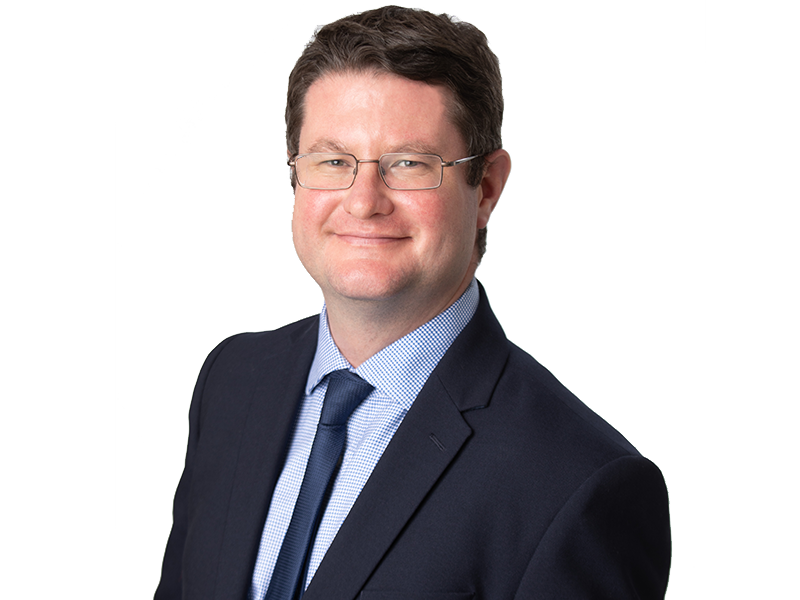A guide to holding movable assets in a trust

In an article originally published by STEP Journal, James Russell examines holding movable assets in a trust and what trustees should consider to ensure the protection of these assets.
Increasingly over the past couple of decades, trust practitioners have found themselves in control of ever-more unusual luxury or collectable assets. While considerable focus has been placed by the industry on developing innovative and well-trodden structures to hold yachting and aviation structures, professional trustees are now regularly seeing art, wine, antiques or other luxury assets passed into their control.
As always, such structures should be created with considerable care, and, where necessary, with input from suitable professionals – not only tax advice for the client, but also providing the trustee with an adequate level of protection in managing their risk.
The reasoning behind clients placing movable assets into trust structures are mostly the same as any other asset, put simply - transfer upon death, flexibility to respond to tax changes and political regimes as well as preservation of family property. Holding an asset at arm’s length in a stable jurisdiction is often viewed as a more important consideration than tax planning. Confidentiality of ownership can also be an important consideration as clients seek to avoid being noted as amassing valuable assets in jurisdictions where it might put them, or their families at risk.
In some limited circumstances, there may even be philanthropic intention behind the creation of a trust. For example, an individual enjoys a valuable asset during his lifetime, may wish to ensure that the asset is donated to a suitable museum or collection rather than being passed on to natural heirs who don’t share the same interest.
Determining the asset
At the point of initial discussions, a few considerations should present themselves to trustees – firstly, certainty of asset – while this is clear in certain circumstances such as a car or artwork, it may be less clear in an asset which is divisible or not presented as a whole. An art collection, for example may include varying works distributed over a wide location.
Trustees should also seek to determine the authenticity of the asset, and understand the value of assets coming into their possession by independent sources – without such confirmation and valuation the trustee may leave themselves open to claims from beneficiaries many years later – either that a ‘swap’ has occurred during their ownership, or that assets were far more valuable than what they received.
Finding the right trust arrangement
Having determined the assets to be contributed into a trust, trustees need to assist clients in ascertaining any tax implications of passing the assets from settlor to trustee.
Generally, the domicile and residence of a settlor and beneficiaries are the important factors to ensure there are no adverse tax consequences in moving assets into a trust, or in the receipt of benefits from a trust in any jurisdictions where beneficiaries are likely to be. In certain cases, the location of the assets themselves may prove to be a factor.
While all the variables are too extensive to cover in the scope of this article, aside from expected complexities with US and French citizens, particular care should be taken with UK resident beneficiaries. In the UK, the Finance Bill 2017 has added ways of valuing the benefit received from luxury or movable assets taken by a UK resident held by a foreign trust. For example, classic cars or artwork are deemed to have a benefit value equivalent to the official interest rate multiplied by the acquisition price.
In these circumstances, this payment can be mitigated by the recipient of the benefit paying the trust a commercial rate for the use of the asset, or amounts paid for the insurance, storage, repair or maintenance of the asset. This payment may prove a useful tool in itself, but should be carefully considered with appropriate advice.
Take particular care with either clients or assets in civil law jurisdictions where the governing law within those countries may override the jurisdiction of the trustees and create dispute that assets are now settled into a trust. The legal concept of lex situs effectively confirms that in the event of a dispute, the law of the location of an asset takes precedence.
In practical terms, this could mean that assets situated in a non-common law jurisdiction (i.e. one which does not recognise the concept of a trust) could be subject to question. Similarly, an asset located in a state with forced heirship rules may also leave the settlement into trust open to question. In the event of a dispute about the trust’s ownership of the asset, a legal case could be built around the fact that they did not form part of a trust corpus. Artwork, or classic cars located in, for example, Middle Eastern countries could fall foul of this issue.
For a trustee, a safe option is to ensure that wherever practical and possible, assets are located in jurisdictions that recognise the concept of trust.
Choice of jurisdiction
The factors influencing choice of jurisdiction are largely the same as those for other types of assets. Clients, and their advisors, are likely to be focused on a favourable and long-standing legal framework, tax effective treatment, jurisdictional stability, experienced trustees and a lack of exchange controls.
Two additional factors affect movable assets – a settlor seeking to disguise his ownership (which may, of course, be for perfectly legitimate reasons with luxury assets) will seek a jurisdiction where deeds need not be registered with an authority but there is a strong regulatory regime to protect them.
Secondly, a client who is concerned with asset protection may seek a jurisdiction with strong asset protection legislation – in the Isle of Man, the Trusts Act 1995 (as amended) enshrined the principle that any foreign government seeking to overturn the settlement of an asset into trust could only do so through the jurisdiction’s courts, and this would not be enforced unless it was consistent with Isle of Man law, effectively providing that properly settled assets would be protected.
While most common international finance centres have no express asset protection clauses enshrined in trust legislation, most practitioners agree that with robust trust law and significant case law, express clauses are not required.
Some jurisdictions, particularly in the Caribbean have introduced expressly named ‘asset protection trusts’, although the creation of these trusts with very few rights for potential creditors can lead to administration issues in the management of assets.
Moving the asset into a trust
In most circumstances, assets will be held in an individual’s name prior to the formation of the trust. Broadly speaking, the trustee has two main options – the asset can be gifted into trust, or purchased by the trust. The right option will likely be determined by the clients’ own taxation situation – be aware of any shadow periods where gifts might be deemed to remain within estates in the event that the settlor passes away within a period of time following the gifting of an asset.
Beyond this, the transfer of an asset into a trust is much the same as a person-to-person transfer, but consideration needs to be given to any and all places where the asset is registered. In the case of yachting and aviation, this would include any formal ‘flag’ registers. With classic cars, this is the vehicle registration and/or log book. Seek to understand the requirements of the specific registration jurisdiction of the asset, which is highly likely to differ from the trust jurisdiction.
Owning the asset
The burden of the trustee after ownership varies widely between asset classes, but the key doctrine is to ensure an understanding of the risks to the asset. How might it be damaged? What accidents might befall it where risks can be managed?
This can often prove to be one of the more challenging aspects of the relationship from a client management perspective. It can, for example, lead to challenging discussions with a family member to explain why the art needs to be locked away, or the classic car can only be loaned under particular circumstances. These discussions should be had at the outset of a relationship.
However, the conscientious trustee who finds themselves owning an asset with which they may not be familiar can use a specialised insurance company in the field – who will not only be vastly experienced in the risks of owning the asset, but can also be used as a partner to set the rules under which the asset can be enjoyed.
While the trustee cannot delegate the responsibility for understanding, controlling and maintaining the asset, the use of an insurance broker specialised in the field can be of considerable assistance in identifying risks in an unfamiliar field.
If this doesn’t feel sufficient, you should seek to employ a specialist manager in the field.
In conclusion
With the appointment of professional trustees, and open and honest discourse between all parties, a trust remains a very powerful tool in succession planning and asset protection, enabling a client to continue enjoying an asset whilst knowing it shall be in safe hands to pass onto later generations.
This article has been carefully prepared, but it has been written in general terms and should be seen as broad guidance only. The article cannot be relied upon to cover specific situations and you should not act, or refrain from acting, upon the information contained therein without obtaining specific professional advice. Please contact Equiom to discuss these matters in the context of your particular circumstance. Equiom Group, its partners, employees and agents do not accept or assume any liability or duty of care for any loss arising from any action taken or not taken by anyone in reliance on the information in this article or for any decision based on it.

Get in touch
If you have any questions, or would like to learn more about taking the next steps with Equiom, please select one of the options below.
Choose a location and contact the team Use our website form
